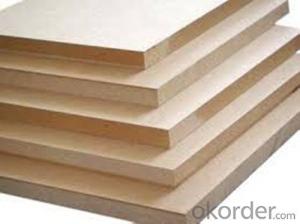When you think of the strength and structure of your home, what comes to mind? Is it the towering walls, the sturdy roof, or perhaps the solid foundation? While these elements are undoubtedly crucial, there’s a hidden hero in the construction of your home that often goes unnoticed: Attic Plywood. This unsung material plays a vital role in the integrity and durability of your house, and it’s time we shed some light on its importance.
The Unsung Hero of Home Construction
Attic plywood is a type of engineered wood product that is used in various parts of home construction, particularly in the attic and roof areas. It’s designed to withstand the test of time, providing support and stability to the overall structure. Despite its importance, many homeowners are unaware of its existence, let alone its benefits.
Why Attic Plywood Matters
Attic plywood is not just a random piece of wood thrown into the construction process. It’s carefully selected and placed to serve specific purposes. Here’s why it matters:
– Structural Support: Attic plywood adds strength to the roof and ceiling, ensuring that they can handle the weight of the house and any additional loads, such as snow or wind.
– Energy Efficiency: By creating a barrier between the attic and the living spaces, attic plywood helps in insulation, reducing heat transfer and thus saving on energy costs.
– Noise Reduction: It acts as a sound barrier, reducing noise transmission between floors and creating a quieter living environment.
– Moisture Control: Properly installed attic plywood can prevent moisture-related issues by providing a stable surface for ventilation, which helps in drying out the attic space.
Installation and Maintenance
The process of installing attic plywood is not as simple as slapping a few sheets up and calling it a day. It requires precision and attention to detail to ensure its effectiveness. Here’s a brief overview of the steps involved:
1. Inspection: Before installation, inspect the attic for any signs of damage or rot that could compromise the plywood’s performance.
2. Measurement: Measure the attic space accurately to determine the amount of plywood needed.
3. Cutting: Cut the plywood sheets to fit the attic’s dimensions, ensuring a snug fit to prevent any gaps.
4. Installation: Secure the plywood sheets in place, using appropriate fasteners and following the manufacturer’s guidelines.
5. Sealing: Seal any edges or seams to prevent air or moisture leakage.
6. Maintenance: Regularly check the attic for signs of wear or damage, and address any issues promptly to prolong the life of the plywood.
The Emotional Connection
While attic plywood may not evoke the same emotional response as a beautifully designed living room, it’s an integral part of what makes your home a safe and comfortable space. It’s the silent guardian that works tirelessly behind the scenes, ensuring that your home stands strong against the elements.
The Personal Touch
Every home is unique, and so is the way attic plywood is utilized within it. Some homeowners choose to leave their attic spaces as storage areas, while others transform them into additional living spaces, like a cozy reading nook or a home office. Regardless of the use, attic plywood plays a crucial role in the home’s functionality and aesthetics.
The Future of Attic Plywood
As construction techniques and materials evolve, so does the role of attic plywood. New technologies and sustainable practices are being incorporated into its production, making it an even more valuable component in home construction.
In Conclusion
Attic plywood may not be the star of the show, but it’s the backbone of your home’s structure. It’s the hidden strength that keeps your house standing tall and secure. So, the next time you’re admiring the grandeur of your home, take a moment to appreciate the unseen hero that is attic plywood. It’s a testament to the ingenuity of construction and the dedication of those who build our homes.

